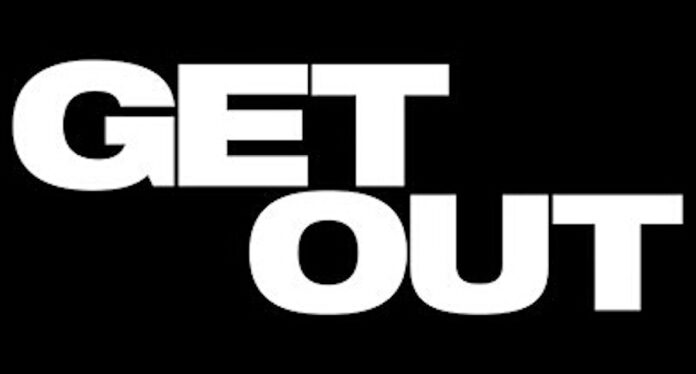In times of constant, pervasive horror, we seek out cinematic incarnations of terrifying realities
I am afraid now, more often and with more potency than in years past. House parties are storm clouds, raining lechery and Rohypnol. Concerts harbor men with rifles around every corner. Fire alarms wail like air-raid sirens. Sunny days are greenhouse gas chambers. It’s not rational — we’re safer now than ever before.
But it is worth noting that my fears are not isolated; Americans everywhere are afraid. Mass shootings, climate change and corruption plague our thoughts like poltergeists, creating a constant feeling of looming, ethereal dread.
Horror films draw from our perpetual dismay. But in recreating and exaggerating casual terrors, they inspire an odd sort of hypocrisy. When John and Jane Doe stroll into the flickering recesses of a cavernous basement (as they inevitably do), we react by yelling “RUN!” into the deaf ears of our movie screens and laptops, often supplemented by an assortment of vulgarities. They never run.
In times of fear, however, we become the protagonists, shoved into Twilight Zones and Upside Downs, Black Mirrors and Sunken Places. Like the idiots we love to berate, we acquiesce to the summons of terror, not at basement doors but at ticket booths. We never run. The response is unintuitive, certainly — but not without precedent.
1956. Whispers of an invasion abound. Rumors of horrid, alien things run rampant, of an infestation, of an America besieged by an invisible enemy, of trusted friends and family becoming marionettes. Cold-War era fears? Yes, in addition to providing the thematic base for acclaimed Red Scare horror films like “Invasion of the Body Snatchers,” “Them!” and “Earth vs. The Flying Saucers.”
2001. Gleaming skyscrapers fall to their knees, the greatest, the richest, the most esteemed city in the world torn to shreds in an instant. Chaos is inevitable, anarchy certain. Post 9/11 cynicism? Of course. The foundation for the 2000’s zombie film renaissance? Refer to the following response from Mark to Jim in “28 Days Later,” widely regarded as the Patient Zero for terrorism-induced zombie horror. Jim, cowering behind the tatters of some forgotten concrete edifice, yells, “There’s always a government! They’re in a… a bunker, or a plane!” Mark shakes his head. “No. There’s no government. No army. No police.”
Modern fears are less overt: monsters of the psyche, reaching out with tenuous fingers to incite terror and desperation before returning to atmospheric dens, leaving victims horrified, stupefied and above all, lost. “The Babadook,” “Us” and “The Witch,” to name a few of contemporary horror’s finest, operate with a profound respect for our universal fear of the dark. Nothing is scarier than that which watches from the shadows.
The American consciousness has coped with monsters of different shapes and levels of necessity: communists, the A-bomb, atrocities of war, terrorism. It is now struggling with less tactile fears: corruption of government officials, air and water pollution, poverty and the death of loved ones round out the top five, according to the 2018 edition of Chapman University’s “Survey of American Fears”. They’re brought to life, as they always are, in our horror films: moving, breathing incarnations of beasts beyond malevolent Punch and Judies.
Yet, we don’t run. The genre is booming, more profitable and popular than at any time in recent history. We jump at the chance to confront our fears, drawn by something that, like the monsters that scare us most, is intangible.
Our waking days, for all their panic and dismay, are not like horror movies — if only they were.
“One student dead, eight others injured after two of their classmates opened fire at a suburban Denver school on Tuesday”.
No heroes to protect us, save those murdered for the crime of selflessness.
“One million animals and plant species at risk of extinction.”
No ex-machina remedies, no Macgyver, no salvation for creatures we’ve watched burn, wither and fade.
“Loneliness is widespread in America, with close to 50 percent of respondents reporting that they feel alone or left out always or sometimes.”
No priests or pastors with holy water and crosses, ready to exorcise inner demons.
The trouble with real life is how truly, terribly hard it is to silence the wails of our quiet desperation. We try every day, and every day we lose. Psychologists have posited that the appeal of the horror film is the catharsis it grants us, the release of “the beast within,” even things as simple as the sensation of an adrenaline rush. It’s likely that each theory has some truth to it. Maybe it’s just nice to win, every now and then.
Written by: Eli Elster — eselster@ucdavis.edu
Disclaimer: The views and opinions expressed by individual columnists belong to the columnists alone and do not necessarily indicate the views and opinions held by The California Aggie.





